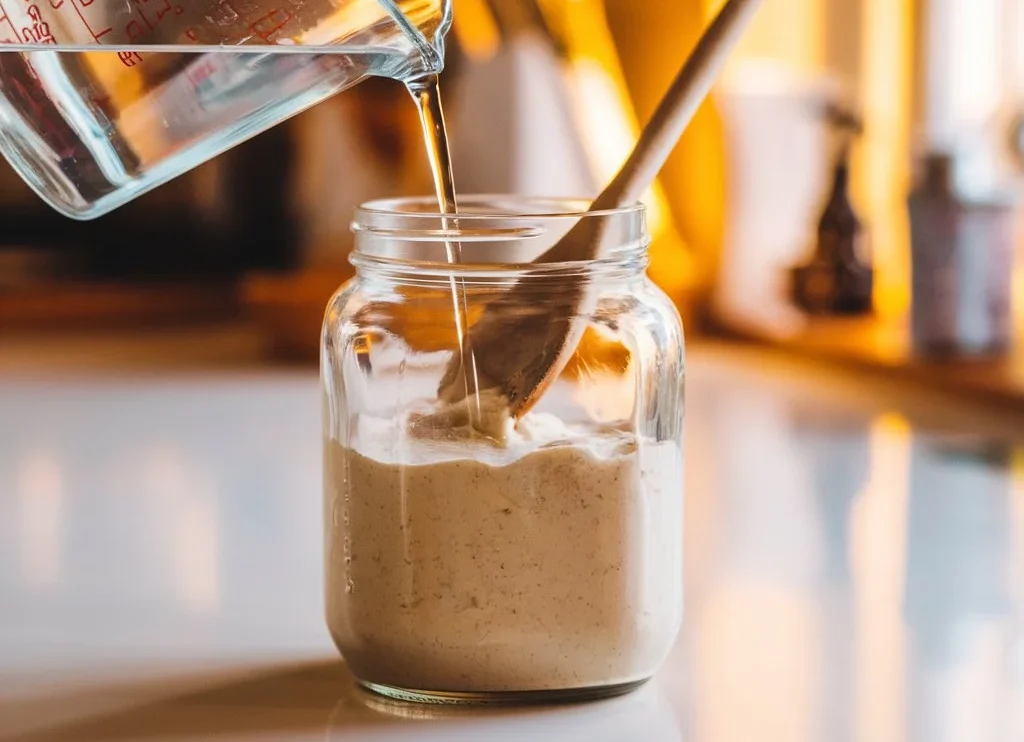Thick and Stretchy Sourdough Starter: Complete Guide for Perfect Bread
A thick and stretchy sourdough starter is essential for baking delicious, flavorful bread. The texture of your starter can influence your bread’s rise, flavor, and overall texture. Understanding how to achieve and maintain the right consistency can be a game-changer for your sourdough baking. In this guide, we’ll cover everything you need to know about thick and stretchy sourdough starters, including their causes, benefits, and how to adjust them for your baking needs.
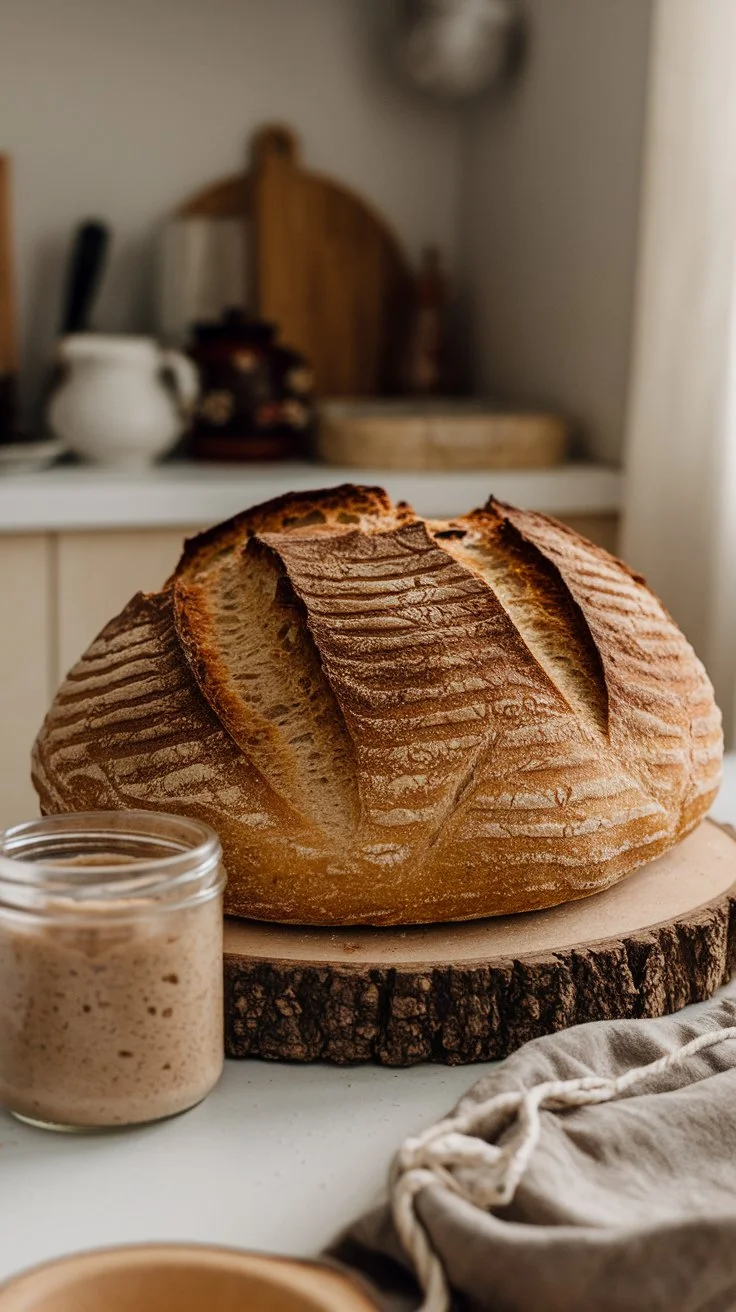
What Causes a Thick and Stretchy Sourdough Starter?
Several factors contribute to a thick and stretchy sourdough starter. Let’s take a closer look at what affects the consistency of your starter.
Hydration Level and Its Effect on Starter Thickness
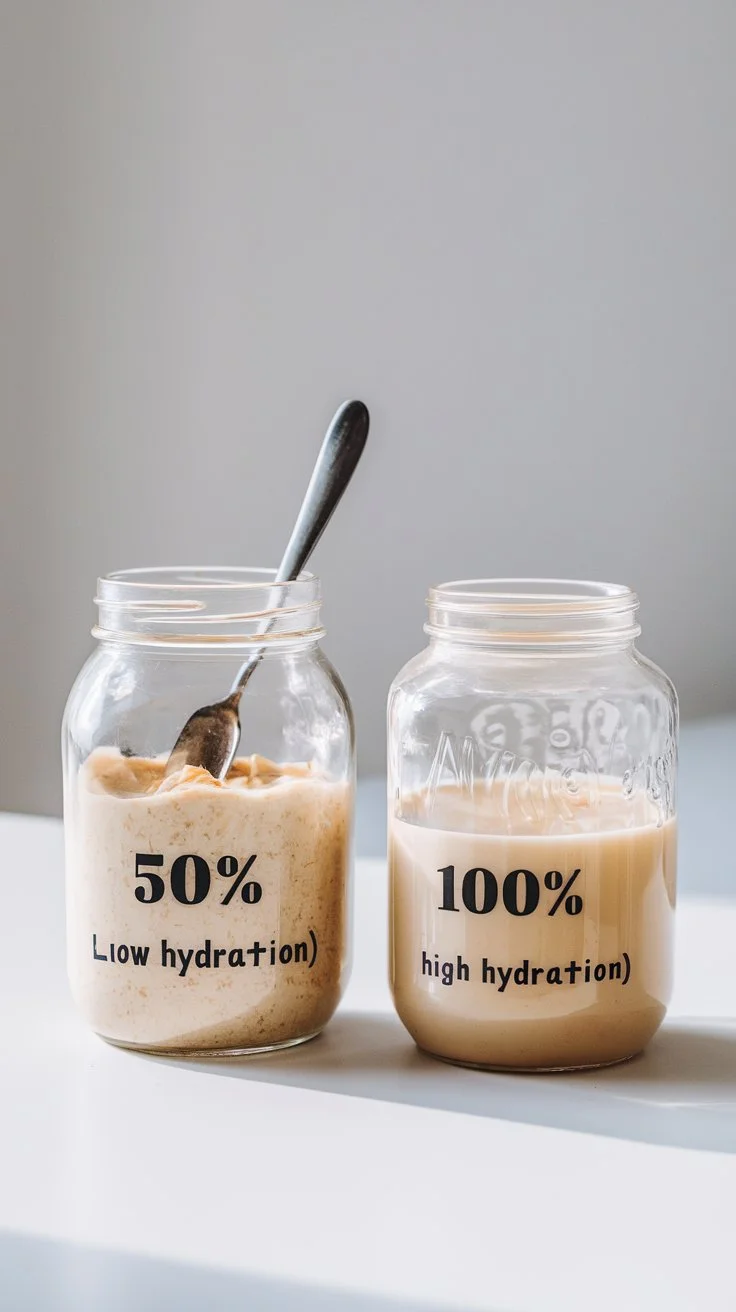
The hydration level (the ratio of water to flour) is one of the most important factors that influence your starter’s thickness.
- Low Hydration (50-60%): Creates a thicker, dough-like starter that is perfect for dense bread.
- High Hydration (80-100%): Results in a more fluid and bubbly starter, common for traditional sourdough loaves.
For a thicker, stretchier starter, aim for a lower hydration level of around 50-60%.
Flour Types That Impact Starter Texture
The type of flour you use plays a key role in the thick and stretchy sourdough starter texture:
- Bread Flour: High in gluten, it makes a stretchy and elastic starter, ideal for airy bread.
- Whole Grain Flours (e.g., Rye, Whole Wheat): These absorb more water, leading to a denser, thicker starter.
- All-Purpose Flour: Offers a balanced texture but is less elastic than bread flour.
- Rye Flour: Sticky and fermentable, creating a denser starter with more tang.
Using a combination of bread and whole grain flours can help create a thick and stretchy starter.
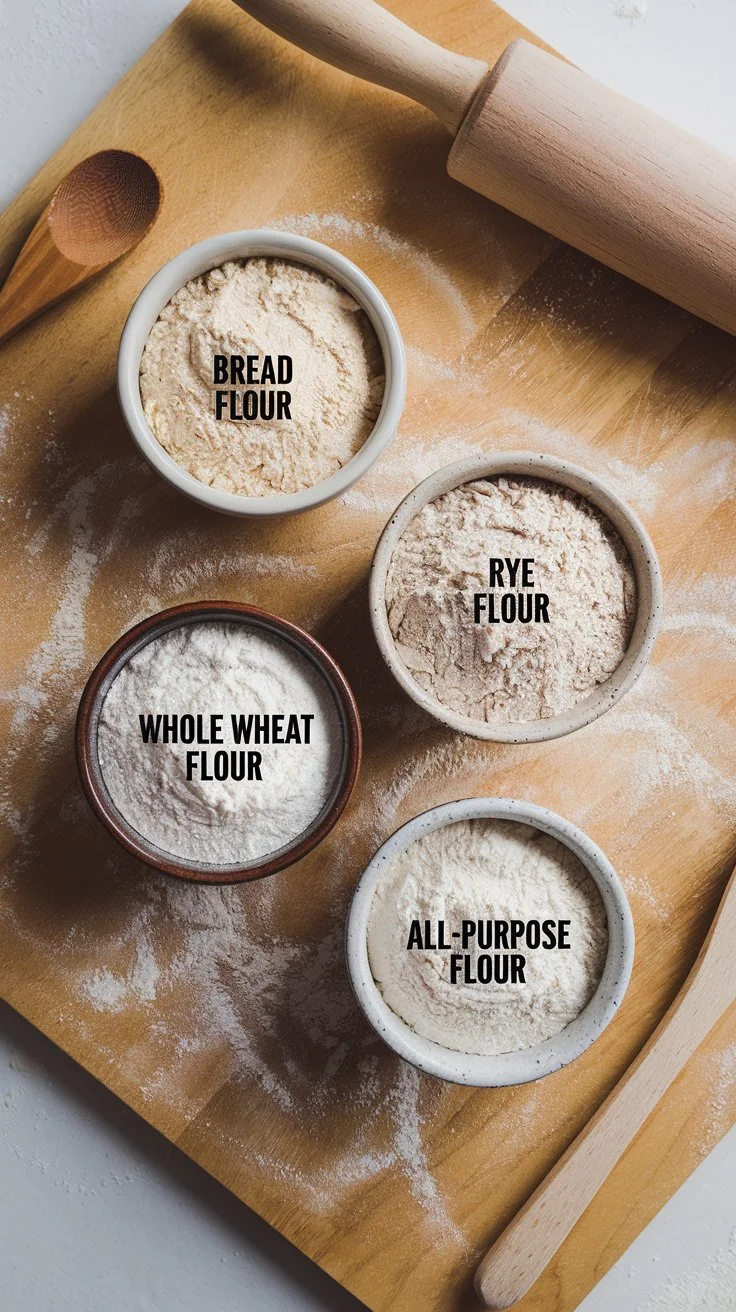
Hydration-Level-and-Its-Effect-on-Starter-Thickness
The fermentation process, where yeast and bacteria break down flour and release carbon dioxide, also affects the starter’s consistency.
- Active Fermentation: More bubbles, more stretchiness! A highly active starter will be more elastic.
- Slow Fermentation: A thick starter may ferment more slowly, but still develop a strong gluten structure over time.
Environmental Factors and Their Effect on Sourdough Starter Texture
Temperature and feeding frequency can also impact your starter’s thickness:
- Temperature: Warm environments speed up fermentation, which makes the starter stretchier.
- Feeding Schedule: Infrequent feedings can lead to a thicker starter, as the microbes have fewer nutrients to consume.
A warm kitchen and regular feedings will help maintain an active and stretchy starter.
Is a Thick and Stretchy Sourdough Starter Healthy?
Yes, a thick and stretchy sourdough starter is typically healthy and well-developed. It means your starter has a strong gluten structure and is fermenting properly. Here’s why:
- Strong Leavening Power: A stretchy starter helps dough rise, creating light, fluffy bread.
- Enhanced Flavor: Thicker starters tend to produce more tangy, complex flavors in your bread.
However, if your starter becomes too thick or hard to mix, it may need some adjustments.
How to Adjust the Consistency of Your Thick and Stretchy Sourdough Starter
If your starter is too thick or thin, you can easily adjust its consistency. Here’s how:
Adjust the Hydration Level to Change Starter Thickness
To change the thickness of your starter:
- To make it thinner: Add more water during feedings. Increase the water-to-flour ratio from 1:1:1 to 1:1:1.2.
- To make it thicker: Reduce the water-to-flour ratio to make the starter stiffer.
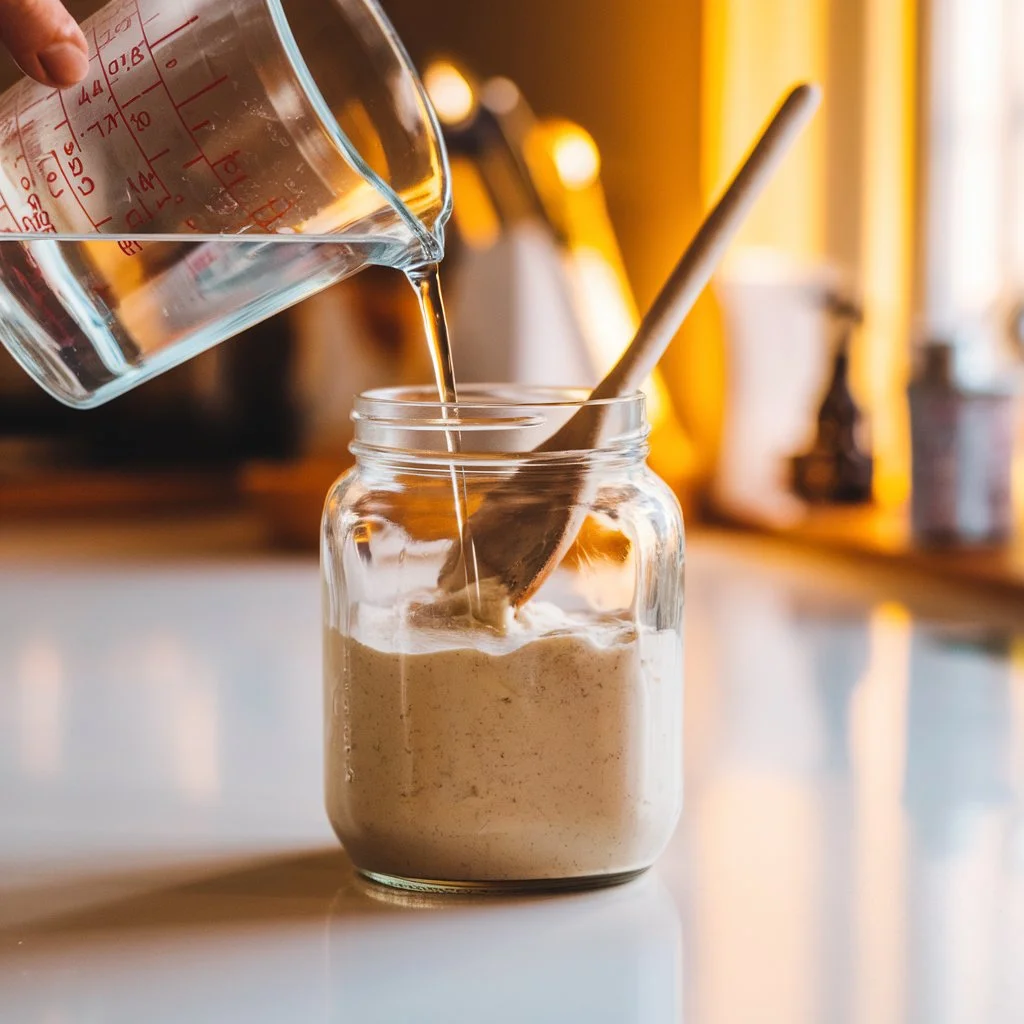
Change the Flour Type for a Different Texture
Switching flours can affect your starter’s texture:
- Thicker starter: Use whole grain flours like whole wheat or rye.
- Lighter starter: Use bread flour or all-purpose flour.
Modify Feeding Frequency for the Right Consistency
Feed your starter more frequently if it’s becoming too thick. Regular feedings keep the starter active and the consistency manageable.
Signs of a Problematic Sourdough Starter
While a thick and stretchy sourdough starter is usually healthy, there are a few signs that indicate it may need attention:
| Symptom | Cause | Solution |
|---|---|---|
| Unpleasant smell | Overfermentation | Discard excess, feed regularly |
| Grayish liquid (hooch) | Infrequent feedings | Stir in or pour off the hooch |
| Excessive stiffness | Too little water | Increase hydration level |
If your starter smells off or has excessive hooch (liquid on top), it’s time to feed it more regularly.
Using a Thick and Stretchy Sourdough Starter in Baking
A thick and stretchy sourdough starter is perfect for certain types of bread. It’s especially good for:
- Stiff Doughs: Such as bagels and pizza crusts, which require a denser dough.
- Flavor-Intense Breads: The tangy flavor of a thick starter is ideal for sourdough loaves.
Tips for Incorporating a Thick Sourdough Starter into Dough
- Mixing: A stand mixer can help incorporate a thick starter into dough more easily.
- Autolyse Step: Allow your dough to rest after mixing the flour and water. This improves the dough’s elasticity before adding the starter.
- Longer Fermentation: Since a thick starter ferments more slowly, you may need to adjust the proofing times to ensure your dough rises properly.
Frequently Asked Questions About a Thick and Stretchy Sourdough Starter
1. Can I switch my starter from thick to liquid?
Yes! Gradually increase the water content during feedings to transition your starter to a more liquid consistency.
2. Why is my starter thick but not bubbly?
This may indicate insufficient fermentation. Try feeding your starter with fresh flour and water and place it in a warmer location to boost fermentation.
3. How do I store a thick starter?
Store your thick starter in an airtight container in the fridge. Feed it before using it to reactivate the fermentation.
Conclusion: Achieve the Perfect Thick and Stretchy Sourdough Starter
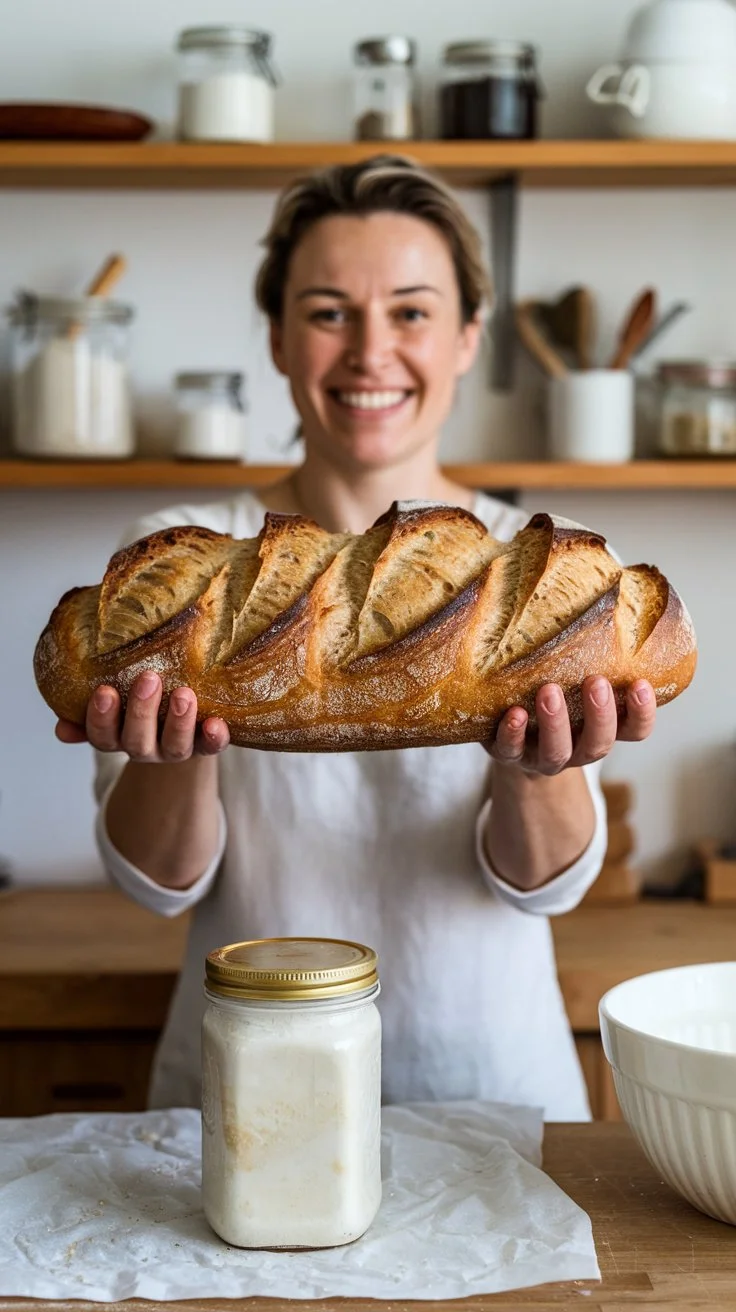
A thick and stretchy sourdough starter is a valuable tool for any baker. It creates flavorful, well-risen bread with a great texture. By understanding the factors that influence your starter’s consistency—such as hydration level, flour type, fermentation activity, and environmental factors—you can adjust it to suit your needs. Whether you’re aiming for a tangy sourdough or a chewy pizza crust, a thick starter is your secret to success.
